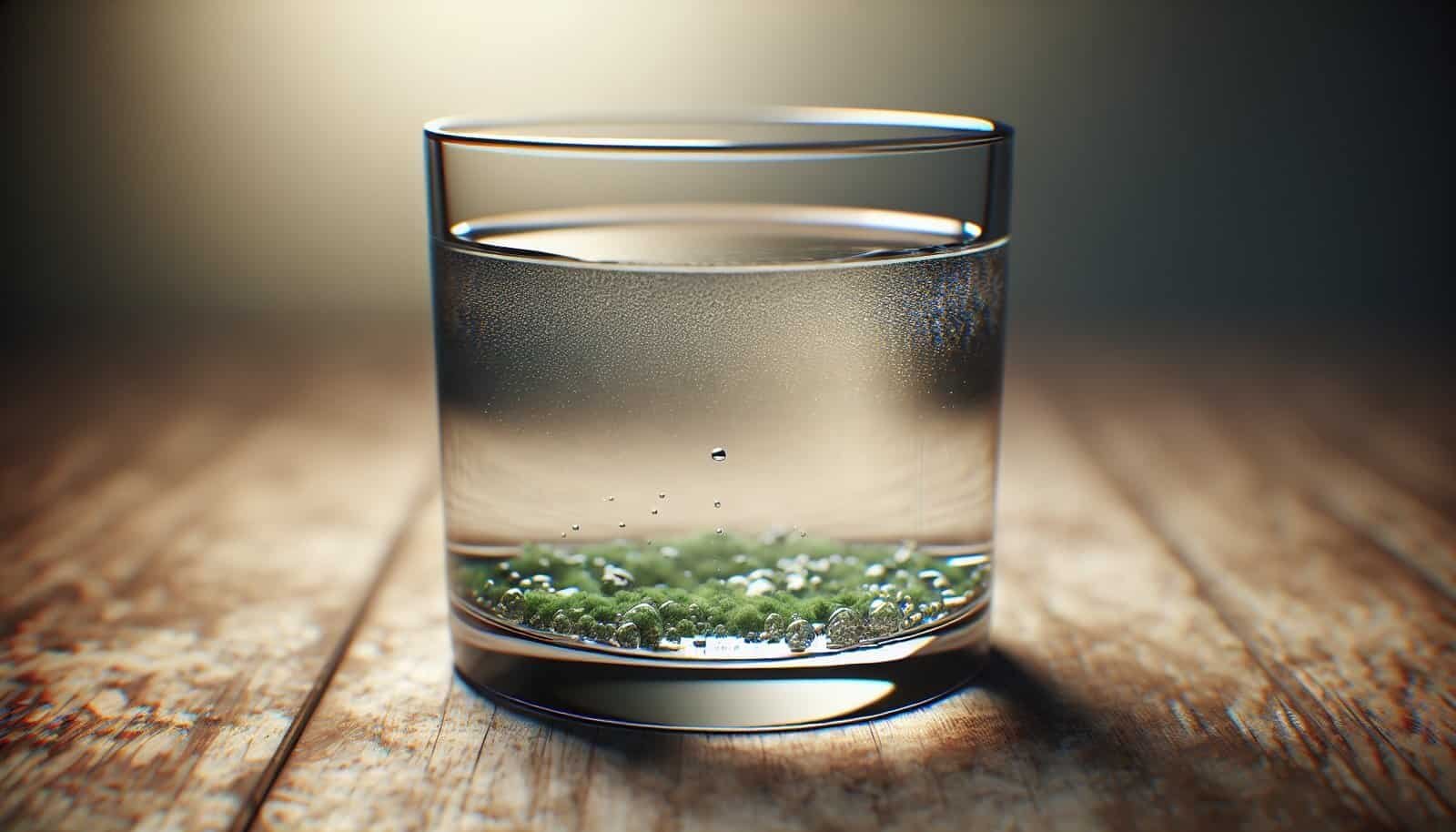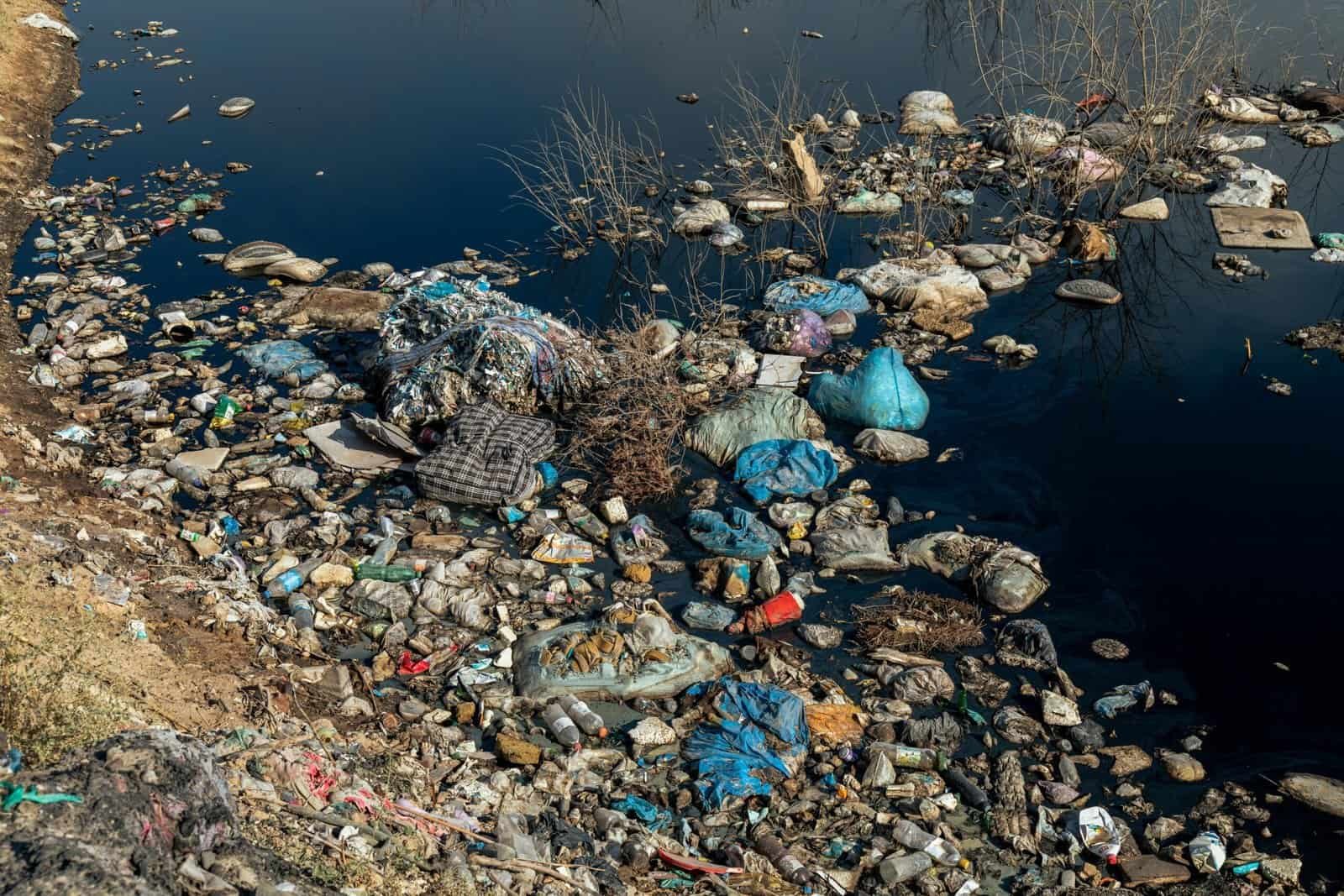Are you worried that your well water might be contaminated with nitrates and want to know what to watch for and how to confirm the problem?

What Are Signs Of Nitrate Contamination In Well Water?
Nitrate contamination is often sneaky because nitrate itself is colorless, odorless, and usually tasteless, so you rarely notice it by senses alone. You need to rely on testing, contextual clues, and awareness of symptoms in people or animals that use the water.
Nitrate is a common groundwater contaminant where agricultural fertilizers, septic systems, livestock operations, or certain natural geologic sources are present. Because your senses won’t reliably tell you that nitrate is present, understanding likely sources and indirect signs helps you decide when to test and take action.
Why you can’t rely on taste, smell, or color
Nitrate does not usually cause any sensory changes in water, so cloudy, smelly, or metallic-tasting water usually points to other problems. If your water looks and smells normal, that does not mean it’s safe from nitrates. This is why routine testing is essential if you rely on a private well.
Contextual signs that suggest testing is needed
If your well is near croplands, is downhill from a field that gets fertilizer, sits close to a septic drain field, or is near livestock areas, your risk for nitrate contamination is higher. You should test more frequently after heavy rains, snowmelt, or flooding because surface runoff can push nitrates into shallow aquifers.
Health effects to watch for
Understanding the health risks will help you prioritize testing and take protective steps quickly if you suspect contamination. Infants under six months and pregnant women are the most vulnerable.
Infants and “blue baby” (methemoglobinemia)
If infants who drink formula prepared with contaminated well water develop sudden bluish skin (especially around lips and fingertips), rapid breathing, lethargy, or poor feeding, seek immediate medical care. High nitrate levels can interfere with oxygen transport in infants — a condition known as methemoglobinemia or “blue baby syndrome.”
Risks for pregnant women and adults
High nitrate levels may pose risks to pregnant women and possibly increase certain pregnancy complications. In adults, acute symptoms are less common but can include shortness of breath, fatigue, and dizziness at very high exposures. Long-term exposure has been studied for associations with certain cancers and thyroid issues, but the evidence is complex and dependent on level and duration of exposure.
Animal health
Livestock, especially ruminants like cattle and sheep, are also sensitive to nitrate in drinking water and forage. Signs in animals include weakness, difficulty breathing, staggering, and sudden death in severe cases. If your animals are affected, test both water and forage.
Typical nitrate thresholds and health standards
Knowing regulatory benchmarks helps you interpret lab results.
- EPA limit for nitrate (measured as nitrogen): 10 mg/L (parts per million, ppm) as nitrate-nitrogen (NO3–N).
- Equivalent expressed as nitrate ion (NO3–): about 45 mg/L NO3–.
- For nitrite (NO2–), the EPA limit is 1 mg/L as nitrogen.
If your water test shows nitrate above these levels, it is considered unsafe for infants, pregnant women, and other at-risk groups. Even lower levels may prompt concern if other risk factors exist.
How do you check your well water for nitrates?
Testing is the only reliable way to determine nitrate levels. You can choose between quick screening options and laboratory analysis depending on your needs for accuracy and confirmation.
Types of testing methods
- Test strips or colorimetric test kits: inexpensive and immediate, suitable for screening but less precise.
- Certified laboratory testing: the most accurate method and recommended to confirm results, especially when readings are near or above the health standard.
- On-site meters: some professionals use portable instruments calibrated for nitrate or nitrate-nitrogen; these can be accurate when properly maintained.
How to collect a proper water sample for nitrates
Collecting a sample correctly helps ensure valid results:
- Use a clean, sterile sample bottle provided by the lab or health department.
- Run the water for a few minutes to purge standing water from plumbing, and sample from the cold-water tap. For wells, sampling from the kitchen tap is common, but some labs prefer sampling directly at the well head. Ask the lab for instructions.
- Fill the bottle to the indicated level, avoid touching the inside of the cap or bottle opening, and screw the cap on tightly.
- Keep the sample cool (refrigerated) and deliver it to the lab promptly — usually within 24 hours for best accuracy.
- Record the date, time, and sampling location and alert the lab to any special circumstances (recent well work, flooding).
How often to test for nitrates
- Test at least once a year if you rely on a private well.
- Test more frequently (every 3–6 months) if you are near agricultural areas, have a shallow well, have infants or pregnant women in the household, or notice changes in land use nearby.
- Test after heavy rains, flooding, snowmelt, or changes in water clarity or taste.

Signs in your property or well system that suggest nitrate risk
While you won’t taste or see nitrate itself, certain indicators on and around your property raise the likelihood that nitrate has entered your well.
Proximity to fertilizer or manure
If fields near your well are fertilized regularly or manure is applied or stored nearby, nitrates can leach into groundwater.
Old or malfunctioning septic systems
Failing septic systems can leak nitrogen-rich wastewater. If your septic system is old, has been flooded, or was recently repaired, test your well.
Shallow wells and unprotected wellheads
Shallow wells are more vulnerable to surface runoff. If your well casing is cracked, the cap is missing, or surface water pools around the wellhead, you should test immediately.
Recent land-use changes
New construction, changes in farming practices, or added livestock operations can increase nitrate risk. Seasonal patterns also matter — spring melt and heavy rains often raise nitrate concentrations in groundwater.
Interpreting nitrate test results
Once you get results, it helps to understand units and what the numbers mean for your household.
Reading units: NO3– vs. NO3–N
Labs may report nitrate as nitrate ion (NO3–) or as nitrate-nitrogen (NO3–N). Nitrate as NO3– will be approximately 4.5 times the NO3–N value. If your lab reports NO3–N, the EPA health standard is 10 mg/L NO3–N (equal to 45 mg/L NO3–).
Example interpretations
- Below 5 mg/L NO3–N (or 22.5 mg/L NO3–): generally low risk, but continue routine monitoring.
- Around 10 mg/L NO3–N (45 mg/L NO3–): at or near the EPA limit — do not use for infant formula, and seek treatment options.
- Above 10 mg/L NO3–N: considered unsafe for infants and pregnant women; take immediate precautions and pursue treatment or alternate water.

Immediate actions if you find high nitrates
If your test shows elevated nitrates, take prompt and reasonable steps to protect vulnerable members of your household.
Short-term steps
- Stop using the well water for infant formula and for drinking by pregnant women until levels are reduced or alternate water is provided.
- Use bottled water or water from a safe municipal source for drinking and cooking.
- Boiling the water will not remove nitrates — it can concentrate them further as water evaporates.
- If animals are affected, consult a veterinarian and use alternate water sources.
Who to contact
- Your local health department or state drinking water program can provide guidance and may help identify testing labs.
- A qualified water treatment professional can advise on appropriate treatment systems for your specific well.
Treatment options for removing nitrates
There are several effective treatment methods to remove nitrate from drinking water. Choice depends on your water use, required capacity, and budget.
Table: Comparison of common nitrate removal methods
| Treatment method | Removes nitrate? | Typical effectiveness | Pros | Cons |
|---|---|---|---|---|
| Reverse osmosis (RO) | Yes (point-of-use) | 85–95% reduction per unit | Reliable for household drinking water, also removes many other contaminants | Typically treats one tap only; requires maintenance and wastes some water |
| Ion exchange (anionic exchange) | Yes (whole-house option available) | High reduction; continuous flow | Can treat entire household; well-proven technology | Resin regeneration uses brine; maintenance and salt use |
| Distillation | Yes (point-of-use) | High reduction | Very effective, simple chemistry | Energy-intensive, slow, point-of-use only |
| Blending | No removal; dilution | Lowers concentration if safe source available | Simple if alternate low-nitrate source exists | Requires another clean source; not treatment per se |
| Biological denitrification | Yes (some systems) | Can be effective in larger systems | Low chemical use, sustainable for some setups | Complex to maintain, usually for community or large systems |
Choose a certified system sized for your household needs and maintain it as specified. Point-of-use systems (like RO or distillation) are commonly used for drinking and cooking, while whole-house options can supply treated water to all taps but may be more costly.

How do you check if your well water has fluoride?
Fluoride is another common groundwater component that you may need to test for, especially if you live in an area known for high naturally occurring fluoride or if you want to know the fluoride level for dental and health reasons.
Why test for fluoride?
Some regions have naturally high fluoride levels due to rock and soil composition. Fluoride at low concentrations (about 0.7 mg/L) reduces tooth decay, but elevated fluoride can cause cosmetic dental fluorosis (in children) or skeletal problems at much higher levels. The EPA’s maximum contaminant level for fluoride is 4.0 mg/L, and the recommended community water fluoridation target is about 0.7 mg/L.
How to test for fluoride
- Certified laboratory testing is the most reliable for fluoride and will report fluoride concentration in mg/L (ppm).
- Some home test kits can screen for fluoride, but they tend to be less accurate and can give only rough estimates. Use them only for preliminary screening, not for health decisions.
- Ask your state or local health department for a list of certified labs that analyze fluoride.
Sampling and frequency
Use the same sampling protocol you would for nitrates: clean bottle from the lab, run tap to purge lines, cool and deliver sample promptly. Fluoride is generally stable in samples, but follow the lab’s instructions for best results. Test annually, or more often if you have risk factors like natural geologic sources, infants in the household, or changes in water source.
Treatment options for fluoride removal
If your fluoride results are higher than desired, options include:
- Reverse osmosis (point-of-use) — effective for lowering fluoride in drinking and cooking water.
- Activated alumina filters — can be effective for fluoride if properly maintained and regenerated.
- Distillation — removes fluoride from the distilled portion.
- Bone char — a carbonaceous filter option used in some settings (availability varies).
Consult a water treatment professional to choose an approach that meets your needs.
Table: Comparative effectiveness for fluoride and nitrate removal
| Method | Removes fluoride? | Removes nitrate? | Best use case |
|---|---|---|---|
| Reverse osmosis | Yes (high) | Yes (high) | Point-of-use for drinking and cooking |
| Distillation | Yes (high) | Yes (high) | Point-of-use where energy use is acceptable |
| Activated alumina | Yes (moderate–high for fluoride) | No | Targeted fluoride removal |
| Ion exchange (nitrate-specific) | No | Yes (high) | Nitrate treatment at point-of-entry or point-of-use |
| Bone char | Yes (moderate) | No | Fluoride removal where available |

Finding a certified lab and understanding lab reports
Use a state-certified drinking water laboratory to get legally recognized and accurate measurements. Your local health department or state environmental agency usually maintains a list of certified labs.
What to expect in a lab report
A credible report will include:
- Contaminant names and measurement units.
- Method detection limits.
- Reported concentrations and whether they exceed regulatory limits.
- Date and time of sample collection and analysis.
- Any qualifiers or notes about sample handling or potential interferences.
If you get a result that concerns you, contact the lab or your local health department for help interpreting the report.
Preventing nitrate contamination at the source
Long-term protection focuses on preventing nitrates from reaching your well in the first place.
Maintain your septic system
Regularly inspect and pump your septic system and keep it well away from the well. Avoid directing surface runoff toward the drain field.
Manage fertilizer and manure use
If you farm or garden, follow best practices for fertilizer application — apply only what is needed, at the right time, and use buffer zones between application areas and wells. Properly manage manure storage to prevent leaching.
Protect your wellhead
Maintain a well cap and a sanitary seal, ensure proper well casing depth, and keep surface water away from the well. Routine inspections every year or two help you spot problems early.
Cost considerations and financial assistance
Testing and treatment costs vary widely.
Testing costs
- Home test strips or kits: $10–$50.
- Certified lab analysis for nitrates/fluoride: $20–$150 per parameter depending on the lab and region. Some local health departments offer lower-cost or free testing, especially for low-income households or when public health concerns exist.
Treatment costs
- Reverse osmosis point-of-use systems: $300–$3,000 installed, plus ongoing filter replacement and maintenance.
- Whole-house ion exchange systems: several thousand dollars installed, plus salt and service.
- Distillers: $200–$1,000 for point-of-use units, with higher energy costs.
Check with your state or county health department for programs that may help with testing or well repairs.
Frequently asked questions (short answers)
Can you see nitrate contamination?
No. Nitrate is usually colorless and odorless. Only testing will confirm its presence.
Is bottled water safe if my well has high nitrates?
Most commercially bottled water is safe, but check the label and source. For infants, use water specifically labeled for baby formula or use municipal water you know is safe.
Will boiling water remove nitrates?
No. Boiling concentrates nitrates because water evaporates, so it can increase nitrate concentration.
Does municipal fluoridation affect private wells?
Municipal fluoridation only applies to the public water system. Private wells are not fluoridated unless your local utility provides a connection or you add treatment yourself. Natural fluoride can be present in groundwater.
Putting it into practice — a checklist for you
- Test your well annually for nitrates and at least once for fluoride if you suspect it or live in a risk area.
- Test more often if you have infants, pregnant women, or livestock, or if you live near agriculture or septic systems.
- Use a state-certified lab for definitive results.
- If results are high, stop using well water for infant formula and seek alternate safe water immediately.
- Evaluate treatment options with a qualified professional and maintain any treatment system according to manufacturer requirements.
- Improve wellhead protection and manage nearby sources of nitrogen to reduce future contamination risk.
Final thoughts
Because nitrate often has no sensory warning signs, your best defense is regular testing and proactive well management. If you suspect contamination, act quickly to protect infants, pregnant women, and animals, and consult public health and water treatment professionals. Testing for fluoride is simple and important when you have reasons to suspect naturally high levels or when you need to know fluoride concentration for dental health decisions. Taking a few practical steps now — testing, protecting the wellhead, and managing nearby land use — will give you confidence that your household water is safe.

